Alangium chinense
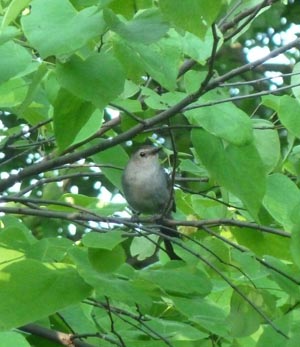 Were the catbirds intoxicated? A small flock, about a dozen or so, noisily teetered among the Alangium chinense branches. Like neophyte gymnasts on a balancing beam, the gray birds, often with one leg off, verged on plummeting out of the tree, falling like the muted yellow leaves in the September breeze. Why were the birds behaving so?
Were the catbirds intoxicated? A small flock, about a dozen or so, noisily teetered among the Alangium chinense branches. Like neophyte gymnasts on a balancing beam, the gray birds, often with one leg off, verged on plummeting out of the tree, falling like the muted yellow leaves in the September breeze. Why were the birds behaving so?
Gray catbirds, Dumetella carolinensis, are a species of North American songbird related to mockingbirds and thrashers. I admit a personal fondness for catbirds. Several of the highly vocal birds have taken up residence around Cunningham House, the building housing the Scott Arboretum library and offices.
For several seasons (I like to imagine they are the same birds returning year after year) the birds have displayed a fondness for the Entrance Garden. Highly social and displaying enormous curiosity, the gray birds flit and hop from branch to branch as I busy myself in the garden. They pause to vocalize, (according to Cornell Lab of Ornithology online bird guide a gray catbird’s song can last up to 10 minutes) snatch an insect from nearby vegetation, light down to inspect my work, then proceed to follow me a bit more before returning back to partner and clutch.
They feed on a variety of food stuffs; insects being their food of preference in the summer. Fruits, when in season, are also consumed. As the group of gray catbirds wobbled and swayed, I noted brief moments of composure lasting long enough to swallow the blue-black Alangium fruit. Could this small fruit on this obscure tree cause such an effect?

Alangium chinense growing on a mounded berm off the east face of Pearson Hall is approximately 15 years old. photo credit: J. Coceano
A singular specimen of Alangium chinense inhabits the Scott Arboretum. The tree, growing on a mounded berm off the east face of Pearson Hall, is approximately 15 years old. While rarely encountered in gardens, the plant is prolific in its native range: open forests and woodland margins from Africa and mainland Asia to the island nations of Indonesia and the Philippines. Leaf morphology varies with African specimens bearing entire leaves while Asian counterparts have dentate or lobed leaves. Other characteristics such as number of ovary and fruit compartments also vary.
Dr. John Grimshaw with Ross Bayton, author of New Trees: Recent Introductions to Cultivation, notes the trees relative rarity in Western cultivation. While new to Europe and North America, Alangium is no stranger to the Chinese, particularly Chinese medicine. Long used in herbalism, roots and stems make a blood tonic while a paste made from the roots is said to help speed the healing of a dislocated joint. Numerous other concoctions and remedies abound. Caution must be heeded though as overconsumption can have deadly consequences. Likely the gray catbirds were learning the ill effects of overconsumption.
In mild climates the woody tree is evergreen. In southeastern Pennsylvania bright green ovate though rarely palmate leaves transition to a muted yellow before dropping. While not vivid like particular Acer or Carya, the effect is pleasant in the autumn landscape. Creamy white hermaphroditic flowers appear in early summer and continue to bloom for many weeks.
Pollination via insects yields drupes ranging in color from dark blue to near black. Dr. Grimshaw notes the effect of summer temperature and duration on Alangium. At Tregrehan, a garden in mild southwestern England, a specimen remains shrubby with its young, new growth failing to ripen. At the Scott Arboretum, where summers are hot and humid, new growth fully ripens and the plant has a distinct tree-like nature.
Literature, while hard to come by, warns of possible dieback in winter extremes. Such phenomenon has not been observed here at Scott. There are plans to place a second Alangium chinense in the arboretum. This plant will be treated as a cut-back shrub. The intent is to see if leaf size and shape, particularly the dentate lobed nature can be exaggerated.
Is Alangium chinense a must have for the garden? Perhaps not. While currently unknown to many, it is a plant of obscurity and for that I am intrigued. Its relationship with ancient civilizations, coupled with the “newness” it represents to Western cultivation and the curious effects it may have on indigenous fauna, make it a plant worthy of further study and observation.





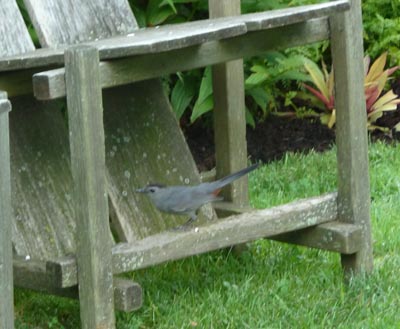
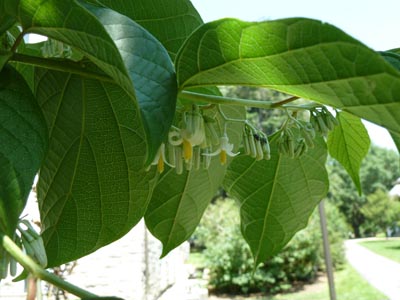
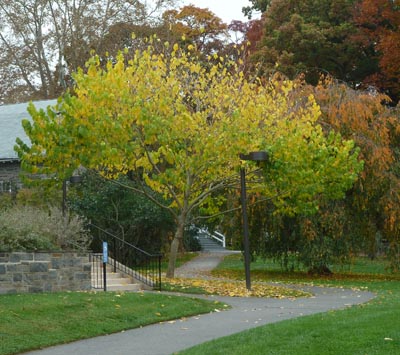
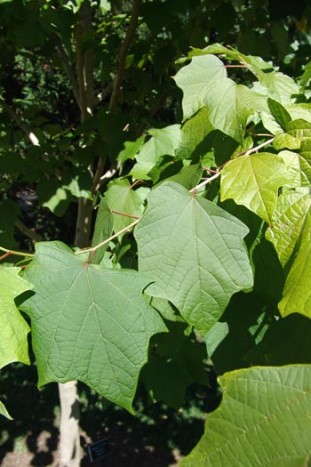
No Comments